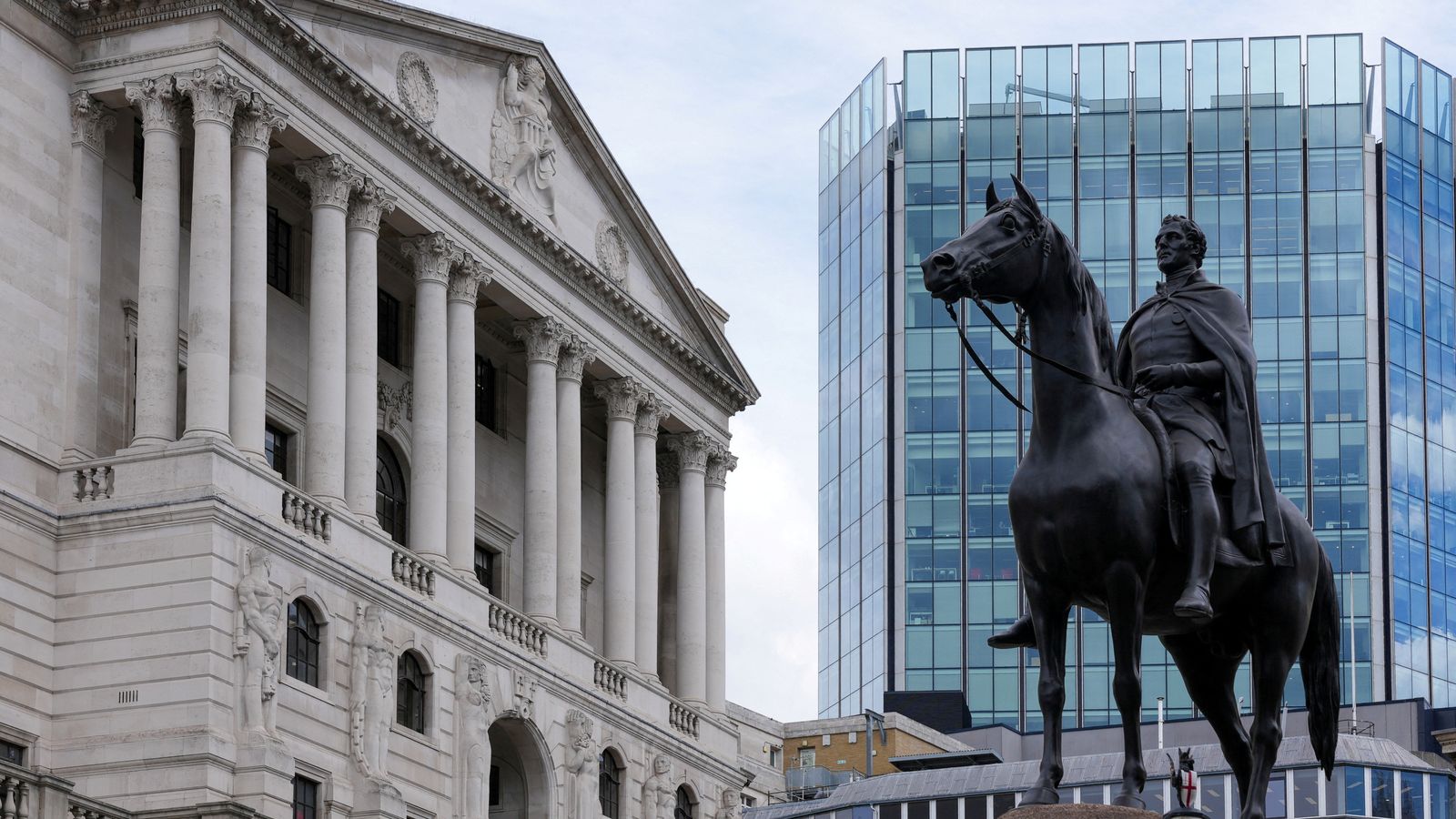While naturally most attention with today’s jobs figures will focus on the biggest decline in wages in real terms, in other words when inflation is factored in, the numbers also point to a lot of interesting things going on beneath the surface.
First of all, look at the way the growth in wages including bonuses and wages excluding bonuses appears to be converging.
In the three months to the end of May, wages including bonuses grew by 6.2%, while wages excluding bonuses grew by just 4.2%.
Wages slump but chancellor talks of ‘good news’ – Cost of living latest
That pointed to a phenomenon that has become well-established since the COVID-19 pandemic of employers making one-off payments to staff in order to stop them from jumping ship.
The aircraft engine maker Rolls-Royce, for example, announced in June that it would be handing a one-off bonus to all 14,000 of its UK employees to help them cope with the higher cost of living.
Most of the UK’s big banks have all been making similar one-off payments: £1,500 from HSBC; £1,200 from Barclays; £1,000 from Lloyds, TSB, Virgin Money and the Co-op Bank and the latest, announced on Monday, which will see Nationwide Building Society hand its 11,000 employees a one-off payment of £1,200.
The figures out today, though, show wages excluding bonuses closing the gap.
During the three months to the end of June, wages including bonuses rose by 5.1%, while wages excluding bonuses rose by 4.7%.
The implication is that employers are increasingly reaching for increases in regular pay rather than making one-off bonus payments to try and retain employees.
This is important because it benefits employees more as permanent increases in wages are pensionable.
Accordingly, it also costs employers more than the payment of a one-off bonus would.
It is also worth noting that the Office for National Statistics revised higher its underlying payroll figures for May.
The underlying figures, moreover, were stronger than the City’s legions of economists were expecting.
Secondly, there is the composition of the labour force.
Read more on Sky News:
Household food bills rocket at fastest rate in more than a decade, research shows
The latest figures from the ONS for July (the numbers are more up to date than the other quarterly figures published today because they are based on real-time payrolls data compiled by HM Revenue and Customs) suggest that the number of pay-rolled employees rose by 73,000 month-on-month to a record high of 29.7million.
However, at the same time, the overall employment rate actually fell very slightly, from 75.6% to 75.5%, in the three months to the end of June.
The two apparently conflicting developments can be reconciled by the drop in the number of self-employed workers, which began during the pandemic.
The proportion of employed to self-employed workers has risen during the past couple of years – partly because some self-employed workers have dropped out of the labour force and partly because some previously self-employed workers have decided to seek pay-rolled employment instead.
And note, also, that the overall employment rate remains a full percentage point below the 76.5% at which it stood in the three months to the end of February 2020 – the period immediately before the pandemic.
Roughly half a million people have left the labour force since the coronavirus crisis – some because they are suffering from long COVID or because they are caring for relatives who are; others because they decided to retire, having realised during the pandemic that they did not particularly miss the old nine-to-five routine; while others – mainly workers from the EU – left for home during the pandemic and did not return.
It means that the “economic inactivity” rate – those people aged between 16 and 64 who are not in work or looking for work – has ticked up from 20.2% immediately before the pandemic to 21.4% now.
This latter factor is the main reason why, in the jargon, there is such a tight labour market right now.
The unemployment rate, despite a very modest tick-up to 3.8% from 3.7% during the quarter, remains strikingly low compared with previous recessions in recent times.
Subscribe to the Daily podcast on Apple Podcasts, Google Podcasts, Spotify, Spreaker
The third point of interest in these numbers is the number of job vacancies.
The tightness in the jobs market is one reason why, in recent months, the UK has witnessed the extraordinary and unprecedented phenomenon of there being more job vacancies in the economy than there are unemployed people to fill them.
Worryingly though, the number of job vacancies fell during the three months to the end of June, the first such decline in nearly two years.
The decline was only a modest one of 19,800, while there are still some 1.28 million jobs out there looking to be filled.
But it is an indicator that some of the heat may be coming out of the labour market.
Put it altogether and the picture is of a jobs market that is, on the whole, remarkably robust given the wider economic backdrop.
Clearly, it will not feel that way for the millions of workers who are seeing their wages fail to keep pace with inflation.
It will, though, be another factor likely to nudge the Bank of England’s Monetary Policy Committee – which raised interest rates from 1.25% to 1.75% earlier this month – towards another half-point rise in bank rate again next month.
